PERSPECTIVES
____________________________________________________
Title: SURFING Maui with Ian Walsh (and his goat)
Words: Ian Walsh
Images: Zak Noyle
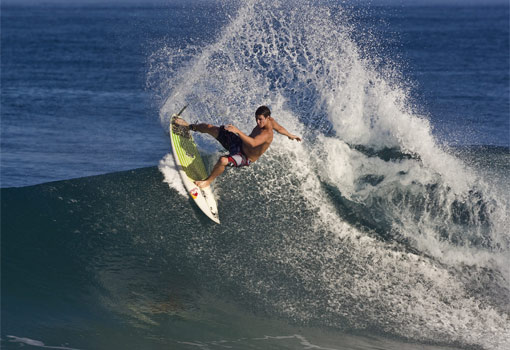
Not many people can say they have surfed the big waves of Jaws in Maui. And even fewer people can say they have surfed a seventy-foot wave. Maui resident Ian Walsh is known for doing both. If he could just teach his goat to surf, he would really make the record books.
Who is Ian Walsh? The son of Peter and Kitty and the brother of Luke, Shaun, and D.K.
If you could be the leader of a country, which one would it be and why? Upcountry Maui, it's nice...
Finish the following: Goats are cool because... They thoroughly love grass
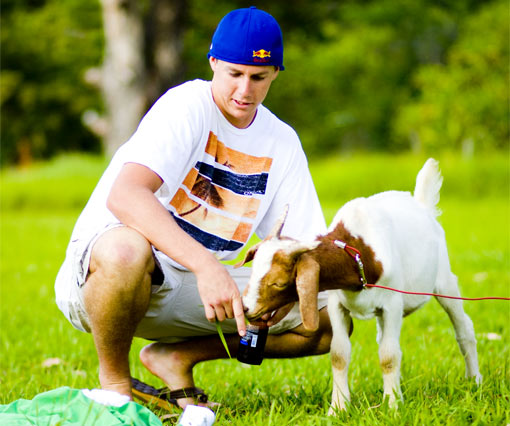
What makes you feel the aloha? Maui.
Swine Flu—vaccinate or don't vaccinate? What's that?
How are you Innov8tive? I have goats for lawn mowers...
SKATEBOARDING
______________________________________________________
Title: SKATE
Images: Bayly Buck
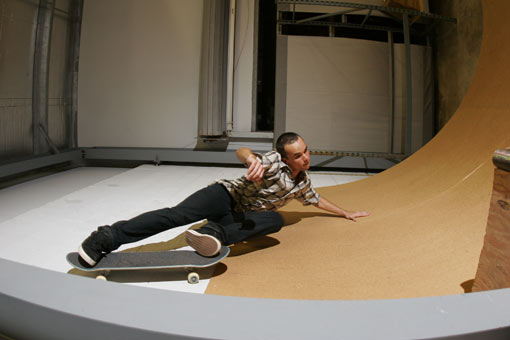
Hello, BMW. First off, how many years have you been skateboarding?
I think I’m close to nine years now.
I hear you’re quite the ladies man. What is your best pick-up line?
Ya, I can pull a pretty nice nose bone (skate trick)! -
Give me your thoughts on the local term "we grew here, you flew here."
I grew up on the North Shore of O‘ahu and graduated from Kahuku High School. That term’s pretty popular, ha ha, but I think it’s mostly intended towards people who just show up somewhere new and forget to respect the people who grew up there. Hawai‘i is so small, so it’s understandable that people get territorial.
What is your relationship to marine life artist Wyland?
My father Bill Wyland is the founder of Wyland Galleries in Hawai‘i, and his older brother, my uncle, is Wyland the artist. I just call him Uncle Wy.
With traffic as bad as it is here in Honolulu, how do you manage with such a crappy automobile?
They’re asking about my VW Bug! I currently own a 1967 Bug. It’s the best car, people don't know, ha ha! Hawai‘i is the perfect place to drive an oversized go-cart.
You always have a tan. Do you go to the tanning salon or do you actually surf?
Ahhh, common, I surf. It’s a really nice remedy and change of pace from coming home every night with a swollen elbow or bad road rash from skateboarding. I have been surfing a lot this summer, but Town is so crowded, and the vibe out there is nothing like it is on the North Shore. I can’t wait for the winter!
What is your current occupation?
I'm kind of balancing between three jobs. I teach surfing at Hans Hedemann Surf School, work at Hale‘iwa Wyland Galleries with my buddy Matt (stop in for some of his famous sangria and the best selection of artwork), and I work at Al's Tinting in Pearl City, where I learned that literally anything can be tinted, ha ha! Oh, and I'm a student.
Who supports your skateboarding nowadays?
A‘ala Park Boardshop (APB) in Chinatown, Emerica shoes, RVCA clothing, Almost skateboards, Hoven sunglasses, my friends and family, mom and dad definitely, ha ha! Also, Fitted Hawai‘i.
Last, but not least, how are you innov8tive?
I think it’s important if you are a boarder to board on everything. I even try to make it out to the snow at least once a year to get in some powder snowboarding—mammoth in February, unreal! Most of all, you just gotta remember why you do it, because you love it!
POLO
______________________________________________________
Title: POLO: Food, Community, and Horses
Words: Tyler Mongan
Pull quote: "It’s an addictive sport."
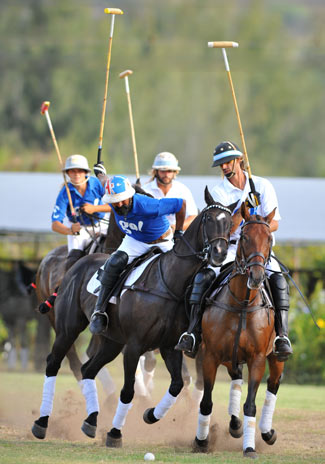
Everyone is welcome at the polo field. At least that is the message Enrique Diaz, founder of the Hawai‘i Polo School, would like to share with Hawai‘i. He has lived a life that many Argentinean boys can only dream about. Inspired by his first encounter with a horse and rider, Enrique was determined to work with horses at a young age. By thirteen, Enrique was a student of polo. "Although it takes about twelve months to train a world-class polo horse, it takes more than a lifetime to train a world-class polo player," notes Enrique. "You'll never learn everything about polo in one lifetime," he continues, as he explains his over thirty years of studying, playing, and teaching the game on a world-class level.
Every Sunday afternoon throughout the summer you can discover the game of polo on the North Shore of O‘ahu. It may seem like an unlikely setting for a sport that has such a "proper" air to it. With the feeling of a royal occasion, shampooed horses and perfectly manicured riders strut onto the field. But it's the ocean backdrop, family picnics, and community feel that make the Hawai‘i Polo Club experience unique.
With over one hundred years of history in Hawai‘i, the sport and lifestyle of polo is still very much alive and well. "It's an addictive sport," notes Dallas, a seventy-two-year-old ex-pilot who started training with Enrique just three years ago. "The horses respond like fighter jets—you think it and they react."
Five students from the University of Hawai‘I at Manoa are determined to make polo a permanent part of Hawai‘i's lifestyle. Chelsea and Alyssa, currently members of the UH Polo Club, moved from Town to the North Shore so they could dedicate more time to studying polo. "I’ve got a family," states Alyssa. "Without Enrique's school, I would never have the chance to play polo." With international media starting to take interest, the UH team may have the opportunity to play Stanford, Enrique's old stomping grounds, sometime in the near future.
With the support of the Dailey family, the driving force behind the Hawai‘i Polo Club, and Dillingham Ranch, which leases the land to the club, Enrique is living his dream. He has spent the past three years clearing the land, training horses and riders, and converting part of the grounds into a community of polo enthusiasts. Enrique's hope is to see polo become a welcomed community sport throughout the islands. His next mission is to organize a once-a-year polo exhibition in Kapi‘olani Park in Waikiki, where it was last played in 1963.
What makes Enrique happy? "Happy polo players, happy spectators, and happy parents," watching their children and friends enjoy the game of polo.
You can enjoy the game of polo and make Enrique happy every Sunday afternoon at Dillingham Ranch in Mokule’ia. Gates open at noon. For more information visit: Hawaiipolo.com
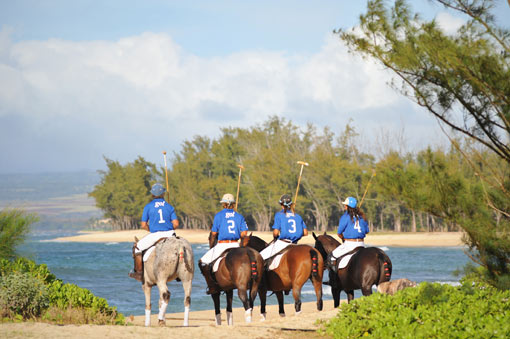

0b4b88b9-80b8-41df-959d-22529e841270|0|.0